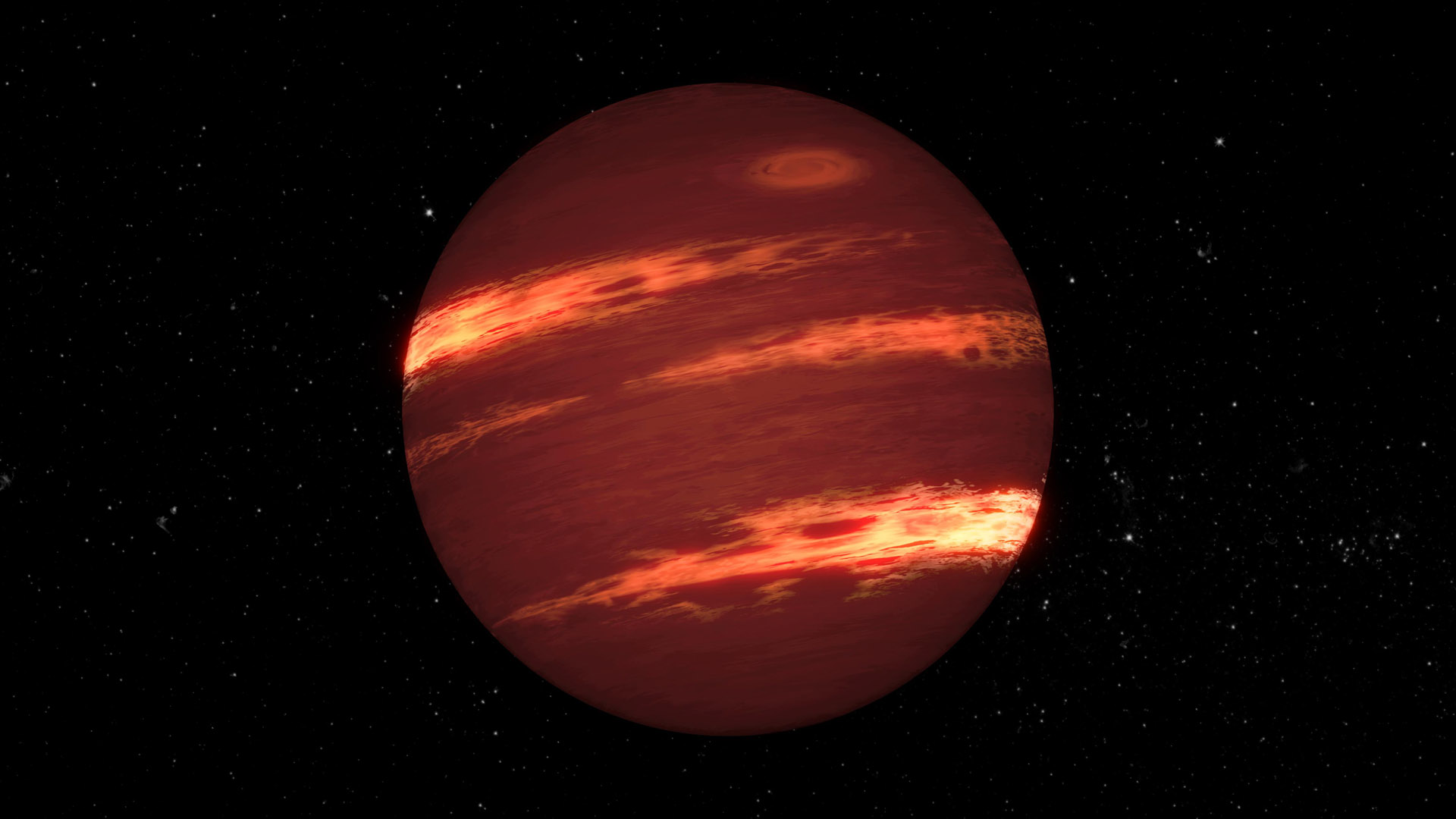James Webb Space Telescope spots alien planet shrouded in weird sand-filled clouds
The exoplanet's atmosphere also contains methane and carbon dioxide.

The James Webb Space Telescope has found a strange alien world shrouded in clouds of sand-like silicate grains.
The exoplanet discovery, described in a new paper as the first detection of its kind, was made by the James Webb Space Telescope's NIRSpec and MIRI instruments. In the data, astronomers spotted evidence of silicate-rich clouds around a brown dwarf nearly 20 times the size of Jupiter. The finding confirms some earlier theories about these odd planet-like worlds.
Brown dwarfs are strange objects that are not quite big enough to ignite into stars but a little too big for ordinary planets. While brown dwarfs can't burn regular hydrogen, they can produce their own light and heat by burning deuterium (a less common isotope of hydrogen that contains an extra neutron).
Related: James Webb Space Telescope sniffs out carbon dioxide around an alien world
The brown dwarf in question is called VHS 1256 b and orbits two small red dwarf stars, some 72 light-years from Earth in the constellation Corvus, or crow, in the southern sky. Astronomers discovered the strange exoplanet in 2016 and it has puzzled them ever since due to its reddish glow. They believed that glow could be caused by some type of atmosphere. Observations from the James Webb Space Telescope have now confirmed those theories, revealing that VHS 1256 b must be wrapped in thick clouds full of sand-like silicate grains, according to Forbes.
Webb also detected water, methane, carbon monoxide, carbon dioxide, sodium and potassium in the atmosphere of VHS 1256 b.
"We will know more from iterations on the data reduction," Brittany Miles, an astronomer at the University of California, Irvine, and lead researcher on the project, told Space.com in an email. "So far, it looks pretty similar to theoretical expectations."
Get the Space.com Newsletter
Breaking space news, the latest updates on rocket launches, skywatching events and more!
The Webb data were so detailed they showed that the ratio of the various gases changes throughout VHS 1256 b's atmosphere, which suggests the atmosphere is not still, but instead wild and turbulent.
"In a calm atmosphere, there is an expected ratio of, say, methane and carbon monoxide," Sasha Hinkley, an astronomer at the University of Exeter in the U.K. and one of the study's co-authors, told Forbes. "But in many exoplanet atmospheres we're finding that this ratio is very skewed, suggesting that there is turbulent vertical mixing in these atmospheres, dredging up carbon dioxide from deep down to mix with the methane higher up in the atmosphere."
VHS 1256 b is small for a brown dwarf, which means that the body is likely young. The exoplanet orbits 360 sun-Earth distances from its two parent stars, following an oval-shaped orbit that takes 17,000 years to complete.
The paper has not yet been published; an early version is currently available on the online preprint repository arXiv.org.
Follow Tereza Pultarova on Twitter @TerezaPultarova. Follow us on Twitter @Spacedotcom and on Facebook.
Join our Space Forums to keep talking space on the latest missions, night sky and more! And if you have a news tip, correction or comment, let us know at: community@space.com.

Tereza is a London-based science and technology journalist, aspiring fiction writer and amateur gymnast. Originally from Prague, the Czech Republic, she spent the first seven years of her career working as a reporter, script-writer and presenter for various TV programmes of the Czech Public Service Television. She later took a career break to pursue further education and added a Master's in Science from the International Space University, France, to her Bachelor's in Journalism and Master's in Cultural Anthropology from Prague's Charles University. She worked as a reporter at the Engineering and Technology magazine, freelanced for a range of publications including Live Science, Space.com, Professional Engineering, Via Satellite and Space News and served as a maternity cover science editor at the European Space Agency.









